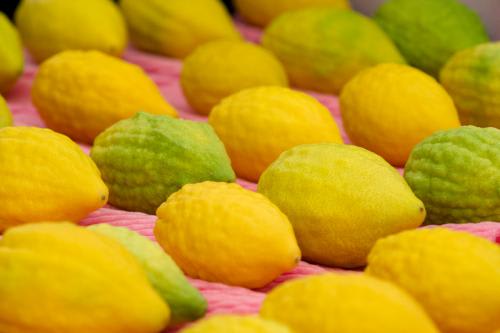Over the past number of years, a debate has quietly simmered beneath the surface of the American Jewish Day School community regarding school on Chol Hamoed Sukkot. My sense is that more schools are moving away from having school on Chol Hamoed than moving towards it, and not without good reason. It is true that filling two or three days with activities that are engaging, worthwhile, and Halachically appropriate can be challenging.
That is a challenge that my school faces as we plan for Chol Hamoed each year. And I admit that as I awoke last week and prepared to face a full day of Sukkah Hops, special programming and regular Judaic classes, I felt a mixture of appreciation and apprehension. But then magic happened where I least expected it.
During Hallel of our middle school minyan (we actually had one, unlike most of this year so far, because the high school and adults joined us for a beautiful community davening), I saw that some of the younger students did not have a lulav and etrog. I approached them and let each have a turn shaking them during “Hodu” and “Ana Hashem.” These were students who would never even have attended a minyan otherwise on this morning, and it was an experience that they may never have had again in their lives. It was clear from the eagerness with which they took advantage of the opportunity, and from the tenderness and growing confidence with which they performed their first-ever “na’anu’im,” that this simple moment may have a profound and long-lasting effect on their spiritual lives.
A little while later I was approached by the 5th Grade Judaic teacher who was waiting for the 6th graders in the minyan to finish so they could leave together for a Sukkah Hop. I said it would be a few more minutes because we were about to start Hoshanot, and she said she would wait with the 5th graders outside of the school building. Then a thought flashed across my mind – a teachable moment was about to be squandered. I ran down the hall and suggested to the teacher that the 5th graders join the middle school for Hoshanot, and she readily agreed.
The 5th graders entered the main minyan room cautiously. They have never attended the main minyan, so they did not know what to expect. At first, they gathered in clusters on their respective sides of the room, but soon the girls found friends among the older cadre and the boys reflexively assumed their Shabbat morning “Ein Keilokeinu” positions around the bimah. I briefly explained how Hoshanot works, and then the parade commenced, the 5th graders witnessing with wide-eyed wonder this fascinating ritual for the first time in their lives. I could see it would not be their last.
These are just two of last week’s priceless moments. There was the student who found out after the fact that we do not make a “Leishev BaSukkah” on popcorn, and there was the moment I stood with my class at the doorstep of the town Rav’s drenched sukkah so that he could tell them an inspiring Sukkot story. There is no substitute for such moments, no way to create them artificially in a classroom lesson about how Hoshanot works, how to shake the lulav during Hallel, or which foods require a “Leishev.” And this begs a larger question: When we move away from school on Chol Hamoed, do we make a statement that learning is for the classroom only, as opposed to bolstering the belief that learning is best defined as the sum of experiences and the impact they leave on our minds and hearts?
I would not have the audacity to prescribe to any other school or community how to make this difficult decision. There are so many factors to consider, so many variables in the equation, and every school must do what is right for them. But I would humbly submit to the debate that as educators who believe in learning through experiences, we have much to lose by cutting off from our students the raft of experiences that arise organically through the very days of their education that we may choose to forgo. Chol Hamoed may not be a “learning” day in the traditional sense, but more learning may still take place than on almost any other day. We know that there are moments in the lives of our own children that cannot be created artificially and require us to “be present,” as the buzzword goes. We should not cut our children’s educators out of that process and deprive them of the opportunity to “be present” in the lives of their students as well. Some of the most important, impactful – and educational – moments can happen on the days with the least “education.”
The words of this author reflect his/her own opinions and do not necessarily represent the official position of the Orthodox Union.
